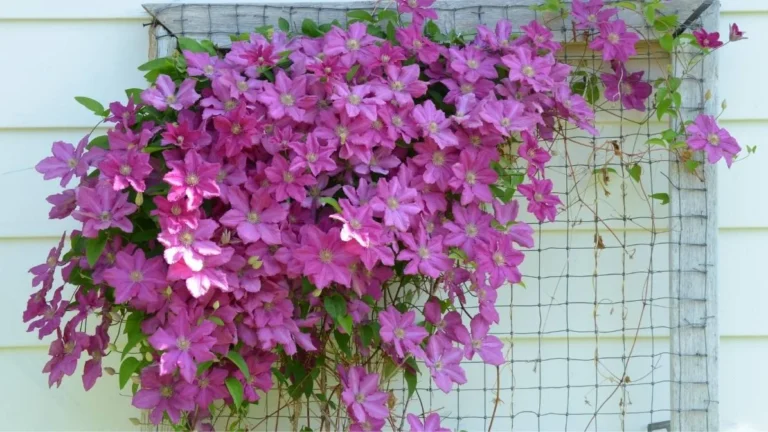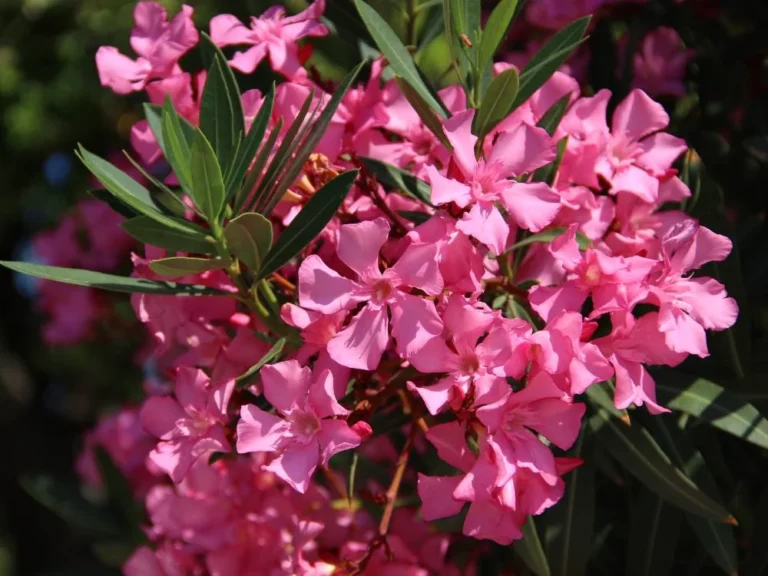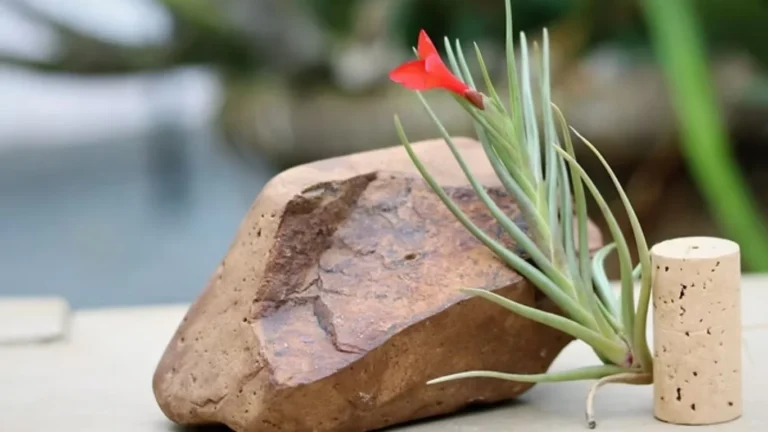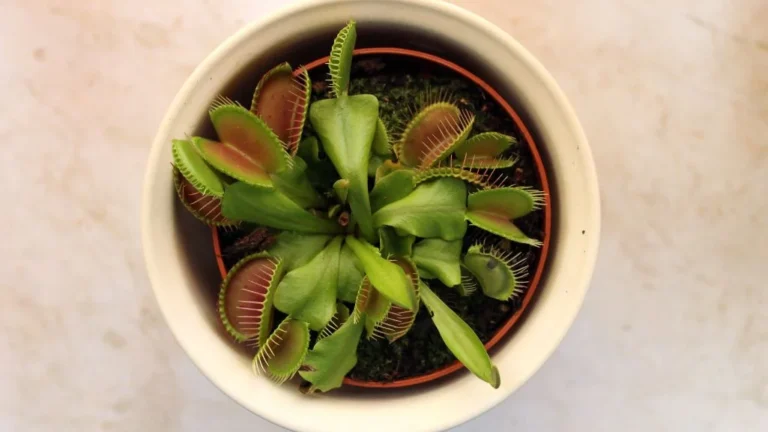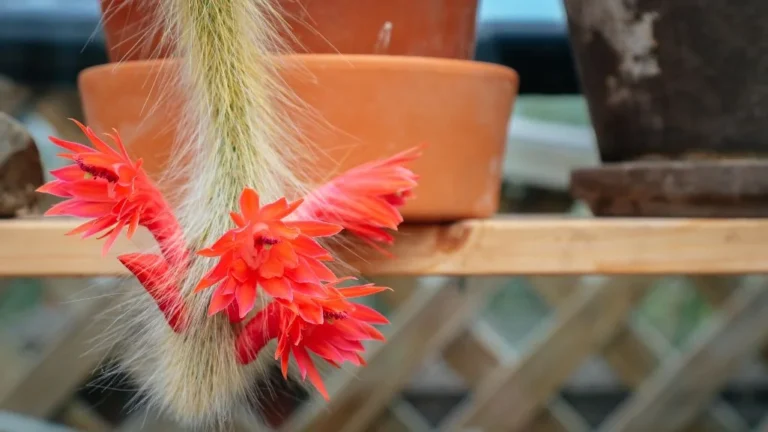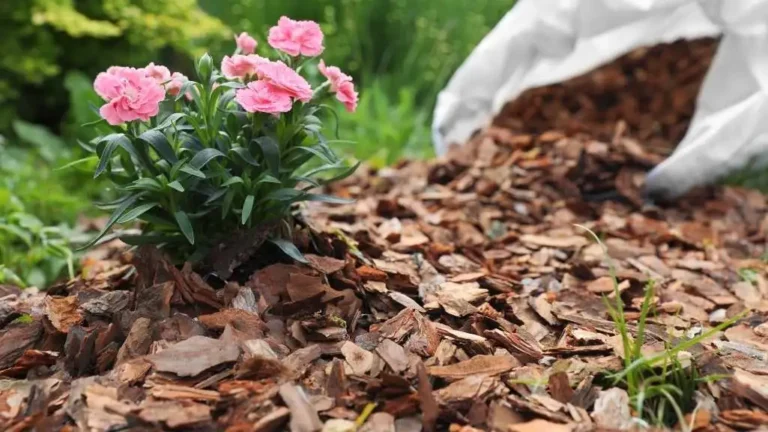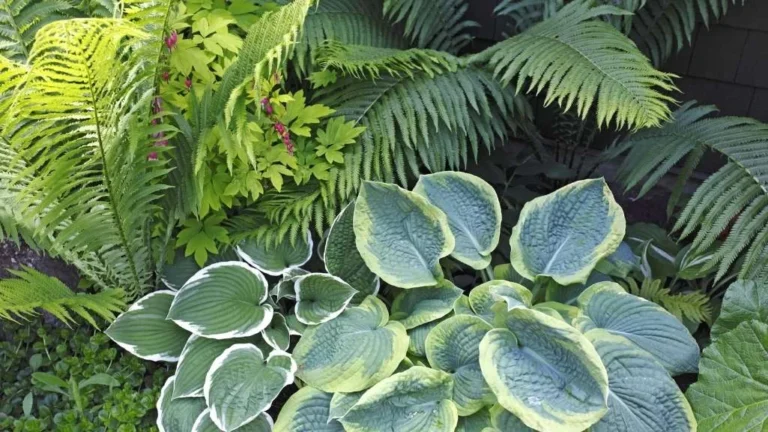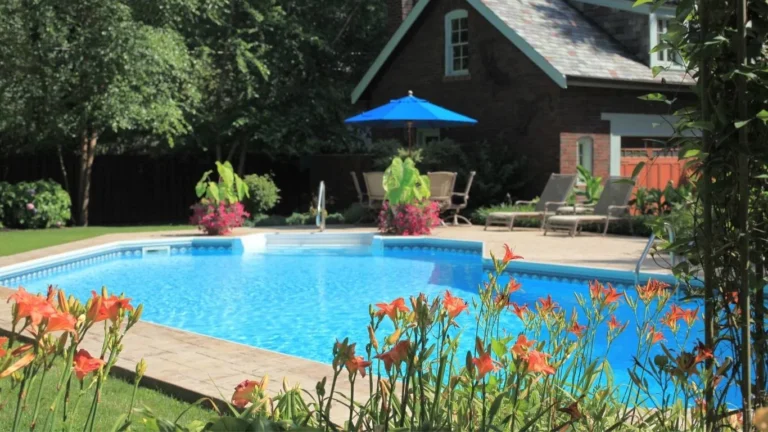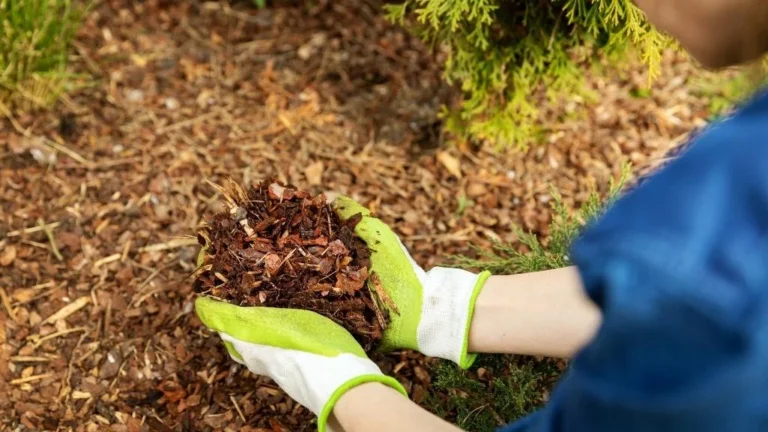Whenever we think of cultivating a giant plant in a miniature form at home, the term that comes to mind is ‘Bonsai.’ The Money Tree (Pachira aquatica) is a large plant we often grow as houseplants. Still, interestingly, as you’re reading this, you probably already know it can also be cultivated as a bonsai. Bonsai is a special technique for growing and training miniature trees in containers, creating a living art form that mimics the appearance of full-sized trees in nature. Bonsai involves careful pruning, wiring, and shaping to guide the tree’s growth while maintaining its natural beauty. Here, I will share my experience growing a Money Tree as a bonsai and help make your journey into Money Tree bonsai cultivation a bit smoother.
Why Should You have a Money Tree Bonsai?
Let me tell you why I chose the money tree for bonsai.
Great looks
Money Tree has great visual appeal with its glossy green leaves and thick trunk that can be braided and given different shapes through pruning.
Adaptable
Money Tree adapts to various lighting conditions, underwatering, and indoor environments, including varying humidity and temperature levels. Additionally, its resistance to common pests and ease of repotting contribute to its overall adaptability, making it a low-maintenance and versatile plant choice.
Symbolic Meaning
In Feng Shui, it’s believed to attract wealth and balance, with its strong, braided trunk representing stability and growth. It’s often gifted to wish success and well-being. For me, being around plants brings peace and positivity to me.
Want to know more about Money Tree?
Tools Required for Money Tree Bonsai
Bonsai is an art. This process needs careful attention and specific tools. I use the following essential tools to grow a bonsai and suggest you do the same.
- Pruning Shears
- Bonsai Wire
- Wire Cutters
- Tweezers
- Spray Bottle
- Repotting Scoop
Choosing the Right Plant for Bonsai
Now comes the main part choosing the best money tree for bonsai. How will you understand if that is perfect for money tree bonsai? I look for the following characteristics while selecting the right plant for the bonsai money tree.
Health of the plant
When selecting a Money Tree for bonsai, starting with a healthy plant is essential. How to find the plant is healthy. Check for the following signs.
- Look for vibrant, green leaves without any yellowing, browning, or spots, as these can be signs of stress or disease.
- The trunk should be firm, not soft or discolored, and the roots should be well-developed without being overcrowded or tangled.
- A healthy plant will have strong, resilient branches that can withstand training and shaping, giving you a solid foundation for your bonsai.
As soon as you’ve ensured the plant you selected is healthy, you can then consider the other factors.
Age of the plant
Young Money Trees (1-3 years old) are an excellent choice when starting a bonsai. Their flexibility makes them easier to shape and train, giving you more control over the development of your bonsai. You can guide their growth from an early stage, molding them into your preferred style.
However, that doesn’t mean you should overlook older plants. Aged Money Trees, while less flexible, offer the advantage of a more developed trunk and branch structure, providing an immediate sense of maturity and character to your bonsai. They can still be trained, though the process may require more skill and patience.
I prefer choosing a young tree because it offers the freedom of shaping from scratch, while older ones give you a head start on achieving that classic bonsai look.
Size of the plant
Bonsai is a miniature plant form, and bonsai pots are also small. So, ensure the plant’s size is proportional to the bonsai pot.
Branch Structure
I look for multiple branches with natural curves that extend from the trunk at different heights. Thus, I can give the money tree bonsai a naturally appealing look. I also want branches that are well-spaced around the trunk rather than clustered in one area to have a balanced and symmetrical appearance.
Trunk quality
When selecting a Money Tree for bonsai, trunk quality is key. You should go for a thick, sturdy trunk with a good taper—meaning it should be wider at the base and gradually thinner toward the top. The trunk should be firm and free of scars or soft spots, indicating a healthy plant. A quality trunk enhances the overall appearance of your bonsai, making it look mature and balanced from the start.
Strong root system
A healthy root system ensures the tree will establish itself well in the bonsai pot and absorb nutrients effectively. So, I ensure that the roots are well-developed, with a dense network that isn’t overcrowded or tangled. I suggest you do the same for getting a thriving money tree bonsai.
Growth rate of the plant
Choose a plant with a slow to moderate growth rate, making it easier to manage and shape. A slower-growing tree allows you to style it more precisely and maintain its form over time. Rapid growth can make keeping your bonsai in the desired shape and size is challenging. Opting for a tree with a suitable growth rate will make creating and maintaining a well-proportioned and attractive bonsai easier.
Prepare the Soil for Bonsai Money Tree
Bonsai is a special technique. So, Bonsai trees require special soil to thrive. The soil used in bonsai is different from regular potting soil because it needs to provide proper drainage, aeration, and moisture retention. The potting mix I usually use and benefit from consists of the following ingredients.
- 10% sandy loam. It is a type of soil that contains a balanced mix of sand, silt, and clay. Here sand ensures good drainage, slit retains moisture and nutrients, and clay helps to hold all the components together.
- 40% Peat moss for retaining water and proving aeration,
- 30% Perlite for improved drainage, and
- 20% Vermiculite holding moisture.
This mix effectively balances drainage, moisture retention, and aeration, providing a suitable environment for your money tree bonsai.
Choose the Perfect Container for Money Tree Bonsai
After preparing the soil, it’s time to choose the perfect container for your bonsai. The matters that must be considered while selecting the container are size, shape, drainage, material, and durability.
Size
The container should be shallow and slightly wider than the root system. I typically look for containers that are 1/3 the tree’s height.
Shape
Shape is important because I like to show off my bonsai. I think the look is enhanced when you choose the shape of the container, depending on the bonsai’s style and growth habit. Usually, bonsai pots come in rectangular, circular, and oval shapes. You can choose according to your money tree bonsai’s style.
Drainage
Ensure the container has adequate drainage holes to prevent water from accumulating at the bottom, which could lead to root rot. Good drainage is crucial for maintaining the health of your bonsai.
Material
Choose a container made of ceramic, clay, or plastic materials. Ceramic and clay provide better breathability and aesthetic appeal, while plastic is lightweight and more affordable. Select based on the look you want and the practical needs of your bonsai. I prefer clay containers for my bonsai.
Durability
Go for a container that can hold the weight of the bonsai and resist environmental wear. A durable container ensures that your bonsai remains stable and supported over time.
Placing the Money Tree in The Pot
- When positioning your Money Tree in the pot, place it in the centre, ensuring it stands upright. Gently spread out the roots so they are not cramped, allowing for even growth.
- As you hold the tree steady, add soil around the roots, pressing lightly to keep it stable without too much compacting the soil.
- Ensure the tree is straight and balanced. This proper positioning supports healthy root development and keeps the tree in place.
- Fill the pot with soil until it covers the roots completely, leaving about 1 inch of space from its rim.
- Lastly, thoroughly water the plant, allowing the excess to drain out, and place the tree in a spot with bright, indirect light.
Placing the Money Tree in The Pot
- When positioning your Money Tree in the pot, place it in the centre, ensuring it stands upright. Gently spread out the roots so they are not cramped, allowing for even growth.
- As you hold the tree steady, add soil around the roots, pressing lightly to keep it stable without too much compacting the soil.
- Ensure the tree is straight and balanced. This proper positioning supports healthy root development and keeps the tree in place.
- Fill the pot with soil until it covers the roots completely, leaving about 1 inch of space from its rim.
- Lastly, thoroughly water the plant, allowing the excess to drain out, and place the tree in a spot with bright, indirect light.
Care and Maintenance for Your Money Tree Bonsai
Sunlight
Money Tree bonsai prefers bright, indirect sunlight as it’s a tropical plant. In tropical environments, the plant grows under the canopy of large trees. So, direct sun can be too intense, potentially causing leaf burn and stressing the plant.
- In an indoor environment, place it near a window with plenty of light without being exposed to direct sunlight, which can scorch its leaves.
- For outdoors, place the plant under partial shade, especially during the hottest part of the day.
- You can use a grow light to supplement if natural light is limited. Avoid placing the tree in low-light conditions for extended periods, as this may stunt its growth.
Temperature
Plants thrive in stable environments; the same goes for the bonsai money tree. The ideal temperature for the bonsai money tree is between 65°F and 80°F (18°C to 27°C). It thrives in warm, humid conditions similar to its tropical origins. Avoid exposing it to temperatures below 50°F (10°C), as cold can damage the plant.
Humidity
Money Tree bonsai thrives in moderate to high humidity, similar to its tropical environment. Ideally, humidity levels should be around 50-60%. If the air in your home is dry, especially in winter, you can boost humidity by:
- Misting the leaves occasionally.
- Placing the pot on a humidity tray filled with water and pebbles.
- Using a humidifier in the room.
Watering money tree bonsai
When I water my money tree bonsai, I consider the following things for its healthy growth without root damage.
- I check the soil to see if it feels dry; if it does, I give the plant a good drink. I try to ensure that every part of the soil absorbs watering by watering till the water comes out of the drainage holes.
- I constantly adjust my watering routine according to season and temperature. Like, reduce watering in winter, as the plant’s growth slows.
Fertilizer for Bonsai Money Tree
The Bonsai money tree does not need much fertilizer; even excessive fertilizer can burn its roots. So, a light feeding once a month during the growing season with a diluted, balanced fertilizer is sufficient. I use a balanced fertilizer (10-10-10 or 20-20-20) diluted to half strength. This ensures equal amounts of nitrogen, phosphorus, and potassium for overall health.
Prune to Thrive
Any bonsai tree needs pruning to maintain its miniature size, shape, and health. Regular pruning controls the tree’s growth, encourages a balanced structure, and enhances its beautiful looks. I maintain several factors while pruning my money tree bonsai. They are following.
Time
Money tree bonsai should be pruned during its growing season (spring and summer), as they recover quickly in this period.
Moderate pruning
Moderate pruning of my Money Tree bonsai focuses on trimming new growth to maintain balance and shape without over-pruning. I carefully remove just enough to encourage fuller growth, ensuring not to cut more than one-third of the foliage at a time to keep the tree healthy and stress-free. This approach supports both the tree’s aesthetics and overall health.
Maintaining Balance
I focus on keeping an even distribution of branches around the trunk to create a harmonious shape. This ensures the tree looks well-proportioned from all angles and no side grows too dense or sparse. Balance also helps to maintain the tree’s good health by allowing light and airflow to reach all parts evenly.
Cut unwanted branches and leaves
When pruning my Money Tree bonsai, I cut unwanted branches and leaves that disrupt the tree’s shape or health. This includes removing dead or yellowing leaves and branches that cross or grow inward.
Protect Bonsai Money Tree from Pests
Pests can harm a bonsai by sapping nutrients, damaging roots, and spreading diseases if left untreated. Pests like spider mites, mealybugs, aphids, scale insects, and fungus gnats may attack your favourite money tree bonsai. To protect your money tree, bonsai from pests, follow these steps:
- Check the leaves, stems, and soil for signs of pests like spider mites, aphids, or mealybugs.
- Pests thrive in moist environments, so keep the soil slightly dry between watering.
- When introducing new plants, quarantine them for a few days to ensure they are pest-free before placing them near your bonsai.
But what do you do if the plant gets infested? I do the following steps immediately.
- Isolate the plant to prevent spreading.
- Inspect and identify the pests.
- Remove pests manually if possible.
- Apply appropriate treatment, like insecticidal soap or neem oil.
- Monitor and repeat treatment as needed.
Dealing with Common Issues
Leaf yellowing
Overwatering is the most common reason for yellowing leaves in a bonsai money tree. Poor drainage can also lead to root rot and make the leaves yellow. Allow the soil to dry out between waterings. Ensure your pot has proper drainage, and avoid letting the plant sit in water.
Leaves dropping
Leaf dropping can be due to environmental changes (like moving the plant), under-watering, overwatering, or exposure to cold drafts. Water the plant regularly, but do not let it sit in soggy soil. Keep the plant in a stable, warm environment away from direct drafts.
Brown leaf edges or spots
Brown edges often indicate under-watering or low humidity, while spots could be due to too much direct sunlight. Water your plant consistently and keep it in indirect light. As the plant requires a humid environment, misting the plant is a good option.
The bonsai money tree, or Pachira aquatica, is a popular houseplant valued not only for its unique braided trunk and aesthetic appeal but also for the cultural significance associated with prosperity and good fortune. This resilient plant can thrive indoors properly, including suitable watering, lighting, and pruning. Its compact size makes it ideal for smaller spaces, while its low-maintenance nature suits novice and experienced plant enthusiasts. Whether as a decorative piece or a symbolic gift, the bonsai money tree remains a cherished plant for homes and offices.
Interested in Verigated Money Tree!?
Frequently Asked Question
Is Money Tree a bonsai?
No, the money tree is not a bonsai by nature, but it can be trained into bonsai by following bonsai techniques.


